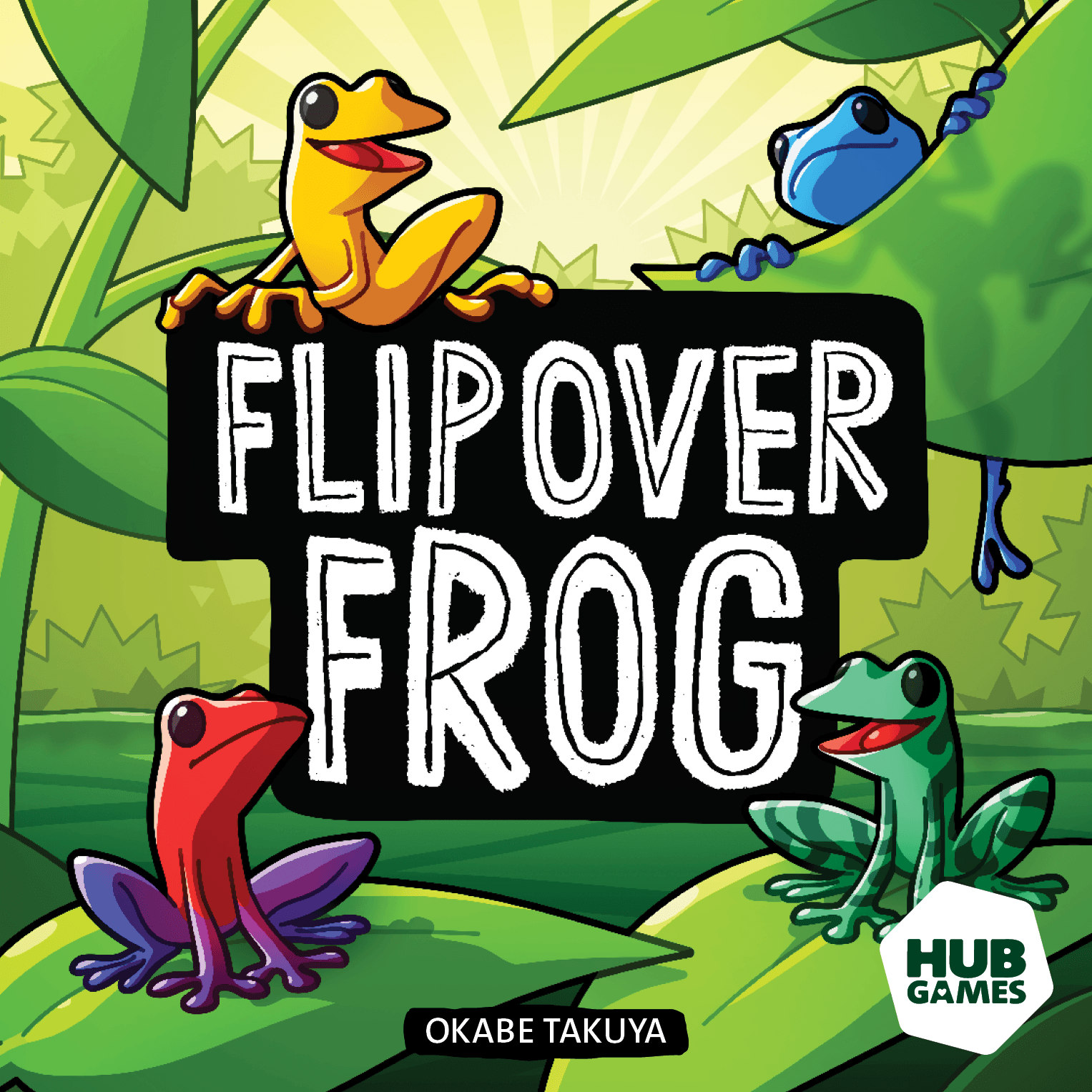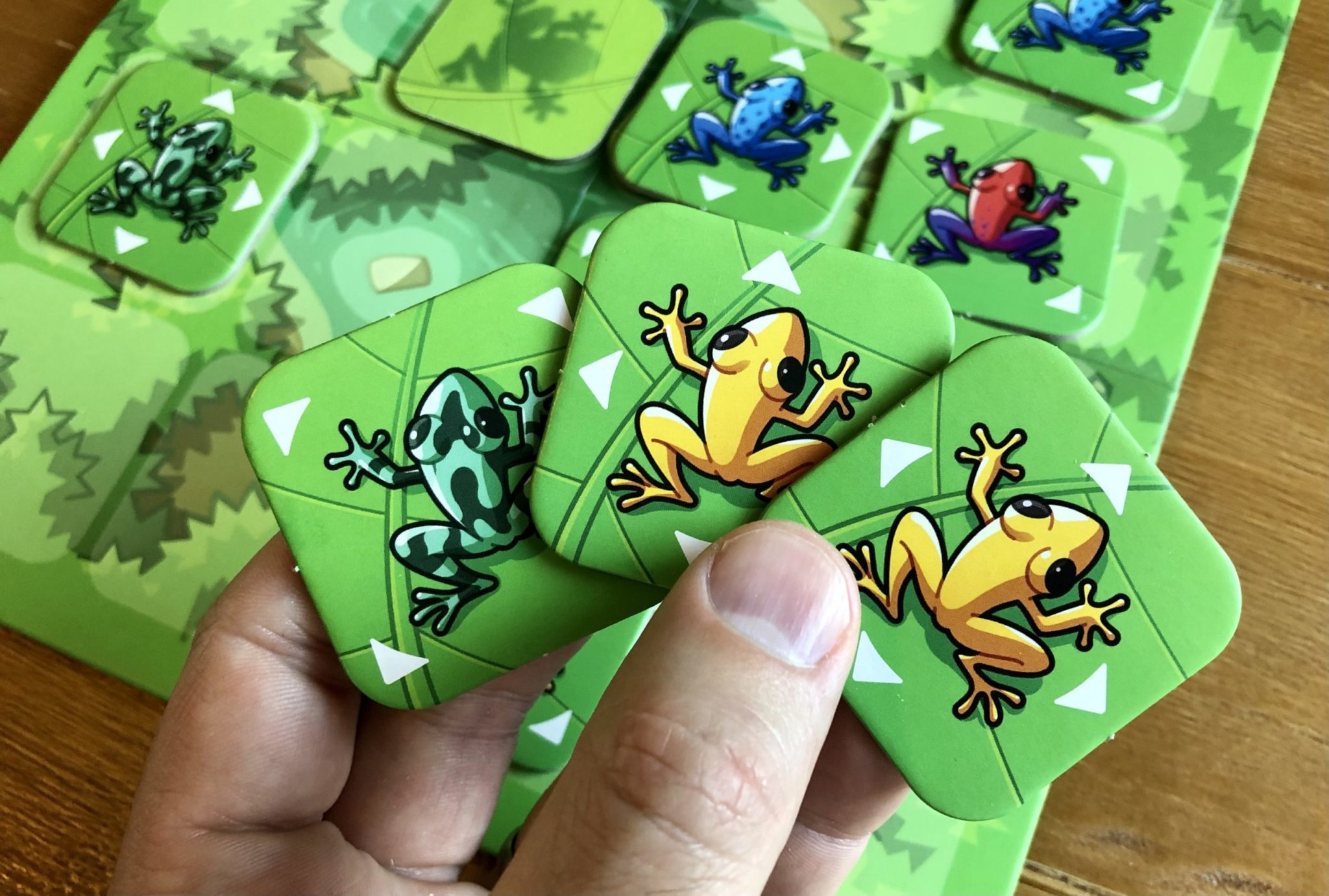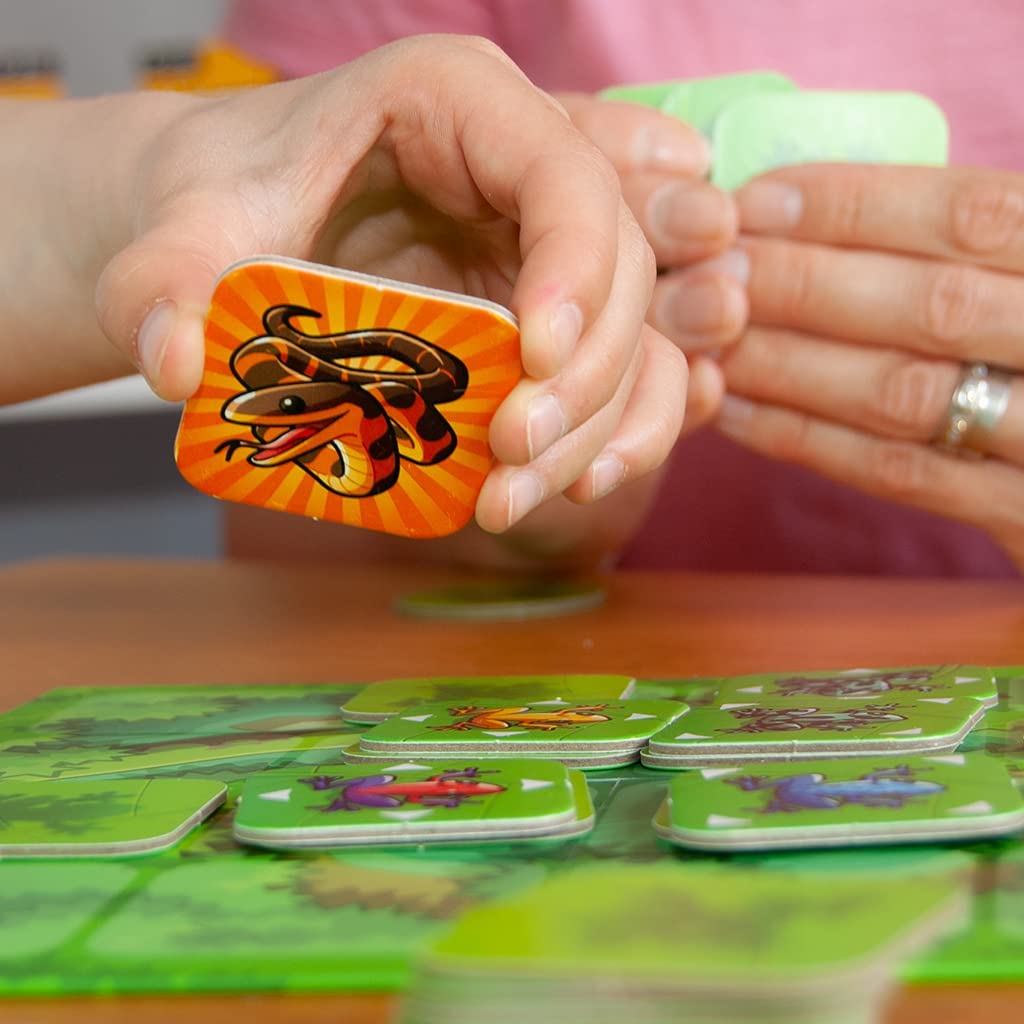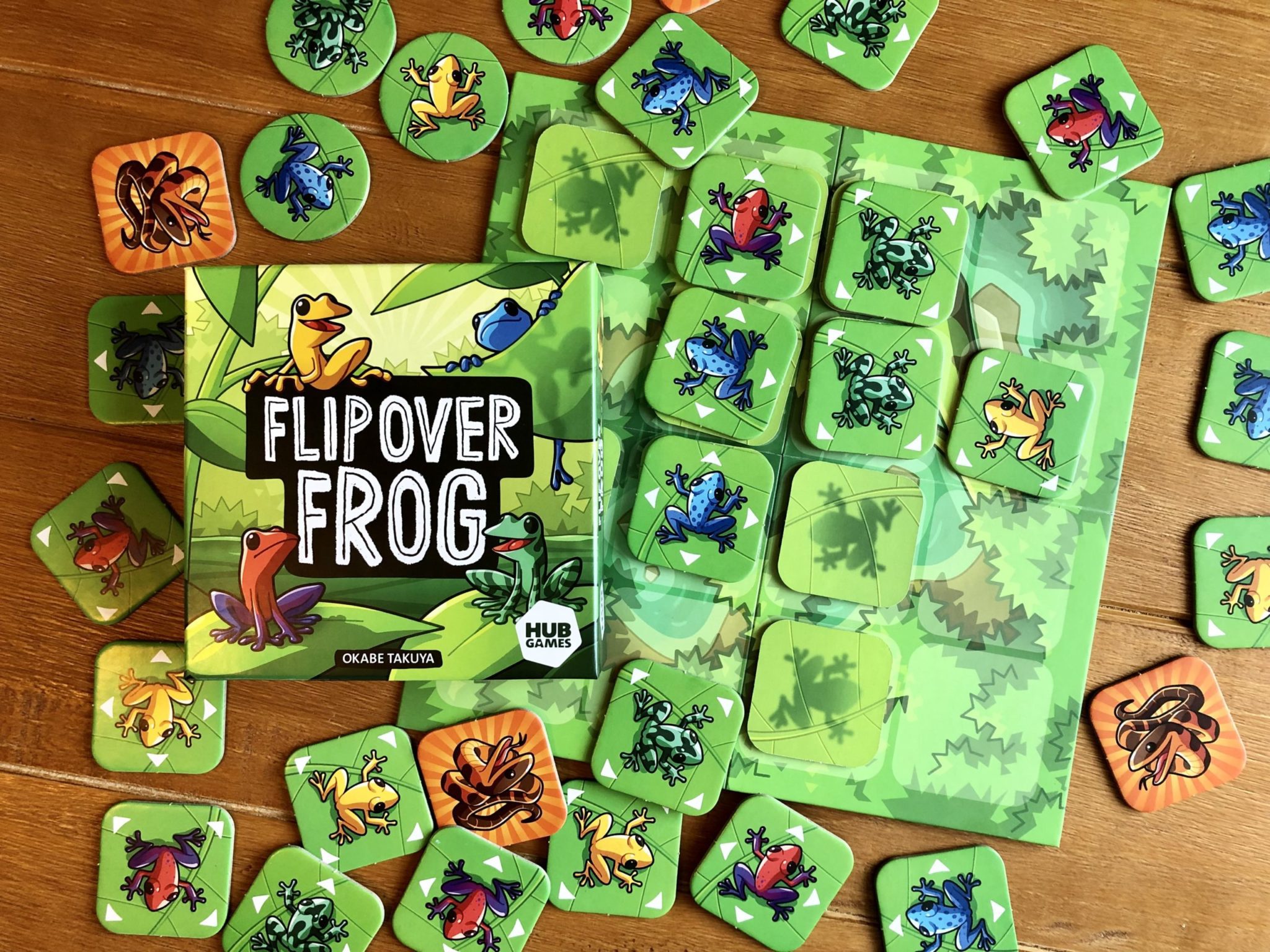Flip Over Frog is a 2-4 player tile laying game where you want to get your colored frogs out on the board more than all the others. It’s a short game that takes about 15 minutes and is recommended for 6 year olds and older, though my 4 year old was able to play the game just fine. Flip Over Frog is published by Hub Games, who are more known for their games: MegaCity: Oceania, Holding On: The Troubled Life of Billy Kerr, and more recently Adventure Mart and Prisma Arena.
What’s in the box?
- 36 square tiles: 8 of each frog and 4 snakes
- 4 round frog tokens
- 1 Game board

How to Play?
Flip Over Frog is setup by randomly dealing out one circle token to each player. This will show each player which color frog they want to flip over during the game and have face up on the board by the end of the game. This token is kept secret and shouldn’t be shown to any other player.

Next, the game board is placed out and all the square tiles are mixed together face down and the tiles form a pile. Each player starts the game by drawing 3 tiles to form their “hand.” The most brightly dressed player goes first. Each player will play a tile out on the board, resolve the effect of the tile, and then draw a new one from the supply to refill their hand to 3 tiles.
The board has 16 places that a tile can be placed out on. Players can place a frog tile on any empty space or any space where the tile is flipped over face down. The snake tiles are the opposite and will be placed on a face up frog tile removing it and the snake tile from the board.

After placing a tile on the board, the arrows on that tile will either point toward the tile directly adjacent (up, down, left, right) or point diagonal (upper left, upper right, lower left, lower right). The tiles that are already on the board where those arrows are pointing at will all get flipped over. If there is more than 1 tile on any of these areas, both tiles will get flipped over showing a frog that was previously face down and on the bottom.
Again players are able to place a frog tile out on their turn on any empty slots on the board or on top of any face down frog tiles on the board.
Players will take turns until either there are no more tiles from the draw, or if there are 16 face up frogs on the board. At this point, all players can flip over their round token showing their color frog, and whoever has the most of their color present on the board wins.

The Verdict?
This game would be a great filler game. It requires some deduction, as players have a hidden color in which they try to end the game with the most frogs of that color. Players will be trying to figure out which color other players are trying to flip over and flipping them back so their color or another color is upright. In a 2 or 3 player game it’s great when you pretend you’re a different color. If the other players think they know which color everyone has, you can benefit from their assumptions, as they flip over frogs of your color without knowing it.
I enjoy the fact that you have a hand of frogs and, even if they aren’t your color, you can figure out a move that will help you. As the game develops, placing out one tile can actually change the board pretty significantly, and I’m glad there are 2 different patterns of arrows that can affect different parts of the board.
The game is best with 4 players because players can react to every single color that is flipped over. In a 2 player game, once a player thinks they know the other player’s color, there tends to be more colors of non players left out on the board. But if a player does an amazing job hiding their color and can trick the other player, then they can surprise that player to win the game. The strategy for the game changes with the number of players playing, and even though mind tricks in a 2 player game is fun, the game still plays best with 4 because then all tiles and colors matter at the end.
The game is a short game with a decent amount of strategy. Even once you figure out how to soup moves and use all the strategy you possibly can in the game, there’s still an element of luck. After you put all your energy into a great strategy, sometimes its not enough. There is some luck of the draw, and memory can become a concern as tiles get flipped over and can be hard to remember which ones are which colors. For me, although the game might fizzle for some after a decent amount of plays, I still enjoy the short game and the fact that my kids can understand the rules and play the game. This game will definitely make it to my table often.
You can grab a copy on Amazon.
Images Courtesy of Hub Games
Have strong thoughts about this piece you need to share? Or maybe there’s something else on your mind you’re wanting to talk about with fellow Fandomentals? Head on over to our Community server to join in the conversation!

